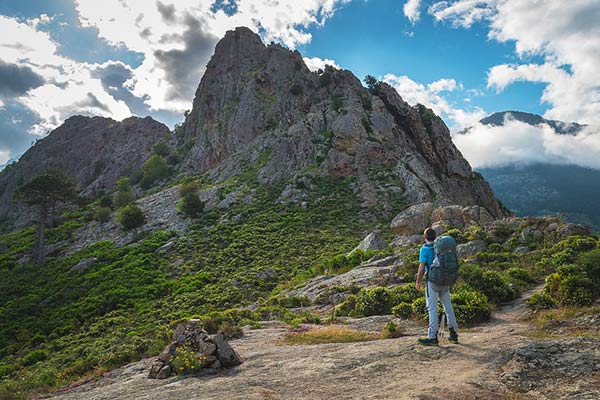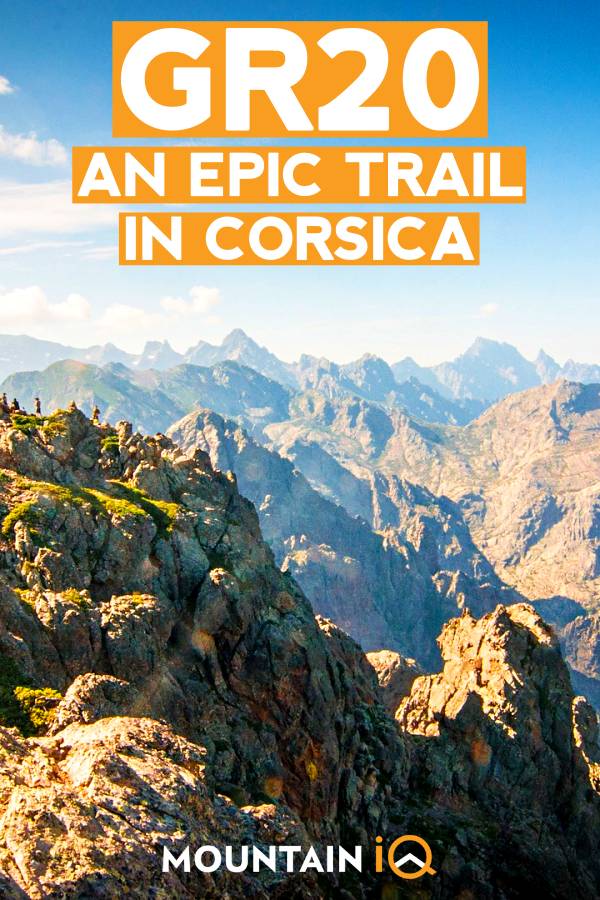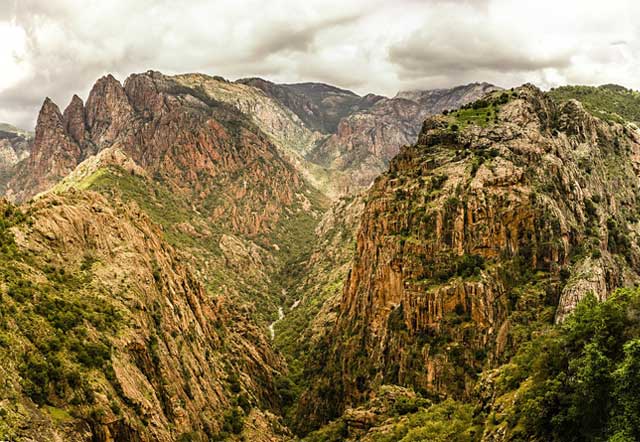The GR20 is a beautiful long-distance hike across the French island of Corsica.
It is considered the toughest of long-distance trails in Europe as well as one of the hardest hikes in the world. The 112-mile (180km) trail traverses the Mediterranean island from north to south, beginning in Calenzana and ending in Conca.
This guide will provide you with everything you need to know before embarking on your journey.
GR20 Trail Overview
The trail consists of two parts;
The difficult rocky northern part, which begins in Calenzana and ends in Vizzavona. On this section you'll have to tackle constant steep ascents and plunging descents.
The Southern part, which spans from Vizzavona to Conca, is the easier leg of the trail, but not as spectacular as the northern part. You can choose to do either of the two parts or complete the entire hike from Calenzana to Conca.
You can do the trail in either direction, but it is most often done from north to south. If you are looking to avoid the crowds it is suggested that you hike northwards.
The trail is separated into 16 sections and winds its way along the jagged granite spine of Corsica’s mountainous center.
The terrain is rugged, but the trails are well marked with red and white rectangles on rocks, boulders and trees.
Although the trail is well-marked it is still highly recommended that you make use of a map to avoid getting lost.
The amount of time needed to complete the trail can vary considerably from hiker to hiker, but on average it should take hikers between 11-16 days.
When planning your trip, be sure to factor in an extra day or two in case of inclement weather. You may also want to consider a few extra days to enjoy the rich culture and history of the various villages as well as spend time at the beautiful beaches.
Mountain huts known as refuges offer basic accommodation along the route as well as the option to purchase food and drink. These refuges generally consist of one large dormitory that sleeps between 25-50 people.
You may also have the option to sleep in a tent near one of the refuges, this option is also a bit cheaper than staying in the actual refuge. It is recommended that you pack a tent in case any of the refuges are booked so you have a place to sleep.
Wild camping is prohibited so you will need to make sure you set up camp in the vicinity of a refuge. There are also private lodgings along the trail and although they are more comfortable they will also be more expensive.
It is recommended that you visit in late June and early September when most of the refuges are open, the weather is not so hot, and the trails are not so crowded.
Avoid hiking in July and August as this is the most popular time and the trail will be crowded.
GR20 Quick Facts
- The GR20 is one of the longest and toughest long-distance hikes in Europe.
- Length: The hike spans north to south across Corsica and is 112-miles (180km) long.
The total ascent is around 10,600m. - The GR20 is considered very tough. This hike should not be taken lightly, and it is a significant physical challenge, especially considering you will be carrying a heavy backpack. The hike is steep and strenuous.
- It is recommended that you embark on the hike in late June or early September. The number of days needed to complete the hike varies greatly from hiker to hiker.
- No permit is needed to hike the GR20.
- There are mountain huts (refuges) that are owned by the national park. You also have the option to camp near the refuges or stay in privately owned hotels.
Highlights Of The GR20 Trail
- Cirque de la Solitude: This is a steep and challenging part of the trail, you will encounter this obstacle in the 4th section. Hikers will have to climb with chains that are bolted to the rockface.
- Lac de Nino: This is a beautiful glacial lake in the middle of grassy meadows. This can be found in the 6th section.
- Lac de Melo and Lac de Capitello: These are two glacial lakes surrounded by rugged rocks in the 8th section.
- Monte d’Oro: This is the 12th highest summit of Corsica located in the 9th section.
- Monta Incudine: The highest mountain of Souther Corsica. It provides great vistas of Plateau de Coscione and can be found in the 13th section of the trail.
- Aiguilles de Bavella: These are spectacular cliffs you will encounter in the 14th stage.
Typical GR20 Itinerary
If you choose to do one section per day, the hike will take you 16 days, weather permitting. You can either do the trail from north to south (as per the itinerary) or south to north.
First stage: Calenzana to Ortu u Piobbu
Second stage: Ortu u Piobbu to Carrozzu
Third stage: Carrozzu to Haut Asco
Fourth stage: Haut Asco to Vallone
Fifth stage: Vallone to Ciottulu di Mori
Sixth stage: Ciottulu di Mori to Manganu
Seventh stage: Manganu to Petra Piana
Eighth stage: Petra Piana to L’Onda
Ninth stage: L’Onda to Vizzavona
Tenth stage: Vizzavona to Capanelle
Eleventh stage: Capanelle to Col de Verde
Twelfth stage: Col de Verde to Usciolu
Thirteenth stage: Usciolu to Crocce
Fourteenth stage: Crocce to Asinau
Fifteenth stage: Asinau to Bavella
Sixteenth stage: Bavella to Conca

Photo by Irena Tsvetanova
GR20 Map and Guidebook
This guidebook provides low and high-level alternatives, extra mountain climbs and everything you need to know about this tough route including what to bring, maps and how to trek.
This guidebook promises to provide you with all the information you could possibly need when embarking on this hike.
With this guidebook you will feel prepared and confident to embark on your journey.
Video Overview
In this video by Friendly Hiker, you can see that the GR20 is truly one of the most difficult hiking trails in Europe. Follow these six hikers day by day on their epic journey through an impressive mountain scenery.
GR20 Hike FAQ
What kind of weather can I expect on the GR20?
Temperatures on the GR20 can vary greatly. You need to be ready for anything and everything.
From very hot to severely cold mountain weather – even in summer.
Corsica is known for its micro-climates; each valley can be different. The weather is unpredictable and can change quickly.
Do I need to bring any equipment for the GR20?
There is no opportunity to buy any new equipment along the route, so make sure you have everything you need before you embark on the trail.
It is also important that you make sure not to carry too much, as that can be equally dangerous.
You will need good hiking shoes/boots, a first aid kit, clothes to accommodate all weather conditions, a water bottle, sun protection and hiking poles (although, these are optional).
Do I need insurance?
It's important that you have comprehensive adventure travel insurance against medical and personal accident risks.
What language do they speak in Corsica?
They speak French and a little English.
Are there any fees you need to pay to hike the GR20?
There are no fees as of yet, but you will obviously have to pay to stay in the refuges etc.

Browse more hikes in Europe
See our top European hikes picks, or check out these popular hikes.



I really liked your report, and it is helping me plan my **GR20** for the next season. But I have a question: you mentioned that wild camping is not allowed and that it is possible to camp at the refuges. What is the average price for camping at these refuges? Do we have to pay at all of them?
Hi Ceasar, thanks for getting in touch. It’s been over a decade since I was on the GR20 so I’m not 100% sure. You can find up to date info here: https://www.le-gr20.fr/en/pages/refuges/